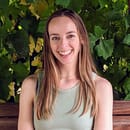Like it or not, the images we see in advertisements shape the way we form ideals. What we look like, how we should live, and what we should buy. Usually, we’re presented with a very narrow range of images, but many companies are expanding the types of people–particularly women–that they display in their advertisements. Though young, white, stick-thin models still dominate the billboards, some companies are exploring other options that fall outside the boundaries of traditional notions of beauty. Here are some of our favorites:
1. Nordstrom
While most companies use non-traditional models in part to gain publicity, Nordstrom has been quietly using models with (perceived) disabilities in ads since the late ’90s. The fact that they treat these models the same as any other is important step towards achieving a society that regards people with different physical appearances the same as they would anybody else.
2. Dove
The Campaign for Real Beauty was one of the largest and earliest expressions of inclusion put out by a major brand. Started all the way back in 2004, the campaign aims to challenge the idea that only some bodies are beautiful. In 2005, Dove featured “normal” women in its ads.
3. Kate Spade
By their mid-late twenties, most models are considered over the hill. Fashion is traditionally something for young people, and what’s “fashionable” is defined by what the young people are wearing. Kate Spade decided to shake things up earlier this year, and ran ads featuring supermodel Karlie Kloss alongside 93-year-old Iris Apfel (who looked fabulous, by the way.) They aren’t the only ones—many retailers are featuring older generations in their ads, proving that fashion is for all ages.
4. Debenhams
We’ll never forget the campaign that British high-street brand Debenhams released in 2013 that featured models of all ages, genders, races and physical appearances. The brand isn’t a stranger to being inclusive—they were one of the first stores in Britain to use plus-size mannequins in its stores. What we love most about this campaign is that it doesn’t glamorize or hide the models’ differences in any way—instead, they celebrate them in an absolutely beautiful way.
Fashion-lovers come in all shapes, sizes, ages, and levels of physical ability, and we all deserve to feel represented by the advertisements that surround us. There’s a lot of work to be done, but things seem to be headed in the right direction.


